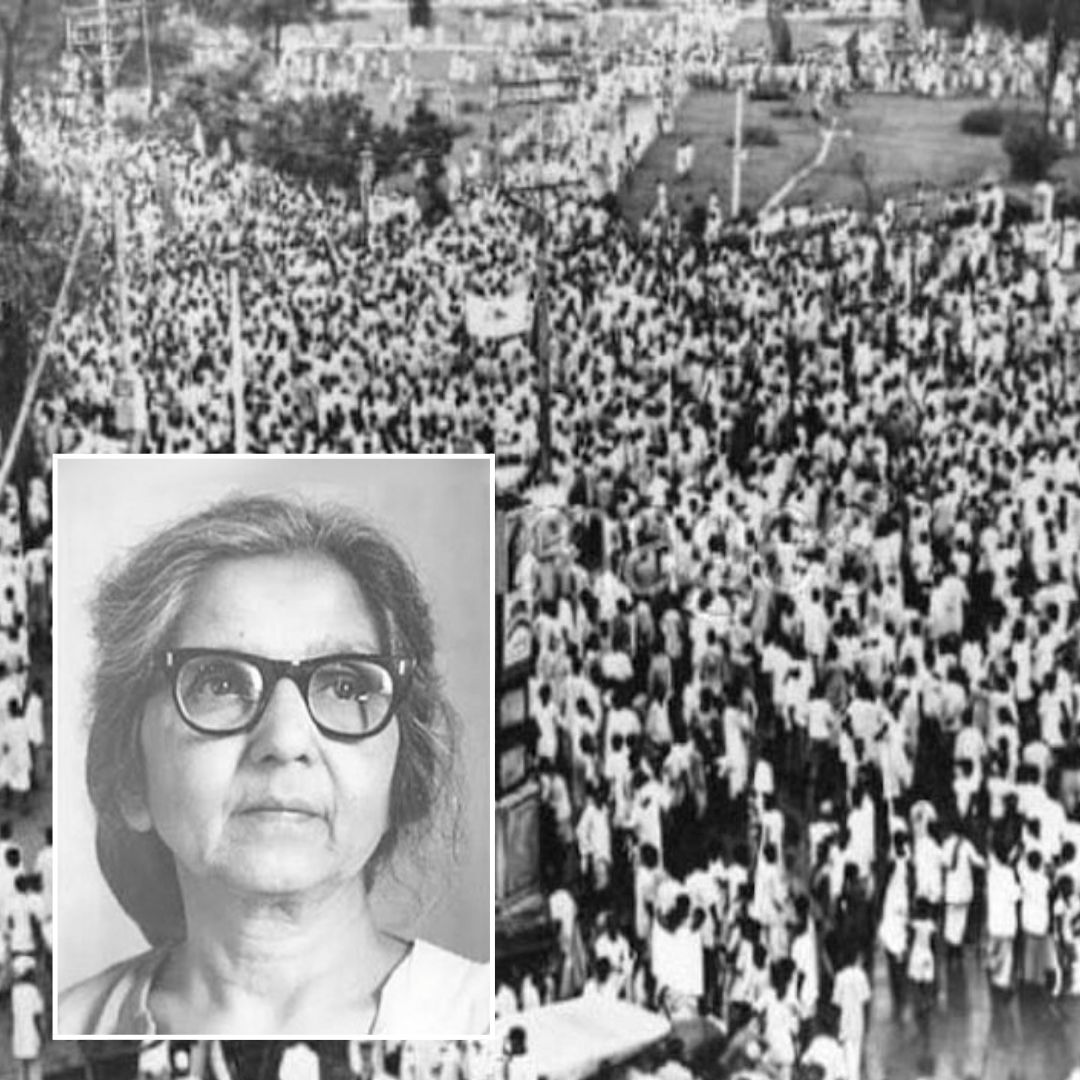
Image Credits: Wikipedia and National Herald
Aruna Asaf Ali: Revisiting The Unsung Legacy Of 'Heroine Of 1942' In India's Independence Movement
Writer: Laxmi Mohan Kumar
She is an aspiring journalist in the process of learning and unlearning many things. Always up for discussions on everything from popular culture to politics.
India, 8 Aug 2022 1:07 PM GMT
Editor : Shiva Chaudhary |
A post-graduate in Journalism and Mass Communication with relevant skills, specialising in content editing & writing. I believe in the precise dissemination of information based on facts to the public.
Creatives : Laxmi Mohan Kumar
She is an aspiring journalist in the process of learning and unlearning many things. Always up for discussions on everything from popular culture to politics.
During the Quit India Movement, when all major leaders were arrested as a pre-emptive measure, Aruna ensured that the movement did not get disrupted and flagged it off by hoisting the Indian Flag at the Gowalia Tank ground.
Aruna Asaf Ali played an instrumental role during the Quit India Movement, and yet we have very less mention of her in the books of history. Here's a walk back to the time in history when we had women leaders flagging off revolutionary movements and building a world to empower women.
Born to a liberal Bengali Brahmin family on 1909 as Aruna Ganguly, the freedom fighter started as a teacher at the Gokhale Memorial School, Calcutta. At the age of 19, she married Asaf Ali, a prominent member of the Indian National Congress (INC), despite strong opposition from her family.
Early Life In Politics
Aruna's marriage to Asaf Ali introduced her to the world of politics, and she soon followed in her husband's footsteps to become an active member of the INC. She was a familiar face at the forefront of many of the struggles, and two years into her political debut, she was arrested for taking part in the Salt Satyagraha.
The police charged her on the grounds of being a vagrant and held her back even when the other prisoners were being released under the Gandhi–Irwin Pact. Other women co-prisoners agitated over this decision and refused to leave unless she was released along with them.
In 1932, she was detained once again at the Tihar Jail. Even while in prison, she ensured that those around her did not face any form of indifferent treatment. She protested against the inhuman conditions of political prisoners, and her consistent efforts led to an improvement in the prison conditions in Tihar.
Part Of Revolutionary Movements
By the end of 1942, she was quite active in several revolutionary and underground movements. During the Quit India Movement, when all major leaders were arrested as a pre-emptive measure, she ensured that the movement did not get disrupted and flagged it off by hoisting the Indian Flag at the Gowalia Tank ground. This simple act of bravery in the face of danger earned her the titles of 'Heroine of 1942' and 'Grand Old Lady of the Independence movement', read an article by India Today.
After that day, the British issued a warrant against her, and she went into hiding. While staying underground, Aruna continued to rebel by issuing pamphlets and magazines such as 'Inquilab'. It was only by 1946, when the warrant was lifted, that she came out in public again.
Gandhian ideals greatly influenced her political ideologies, and she was often described as "Political children of Gandhi but recent students of Karl Marx."
Post-Independence: Once A Rebel, Always One
Post-independence, she served as the first elected Mayor of Delhi in 1958. In this position, she played a crucial role in the upliftment of women through education. She created awareness around the necessity of women to get educated through her weekly journals 'Weekly' and newspaper 'Patriot'.
In 1954, she helped in the genesis of the National Federation of Indian Women, the women's wing of CPI. Ten years after which, she was awarded the International Lenin Peace Prize. She was also a recipient of the Padma Vibhushan in 1992, the Jawaharlal Nehru Award for International Understanding in 1991, and the highest civilian recognition of Bharat Ratna posthumously in 1997.
Also Read: 'Har Ghar Tiranga': Here's Everything That You Need To Know
 All section
All section














